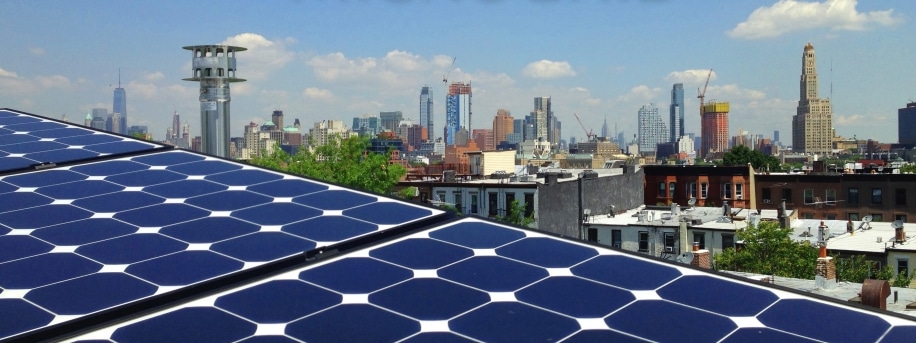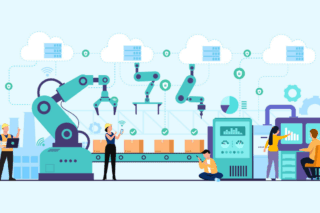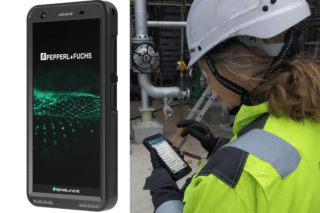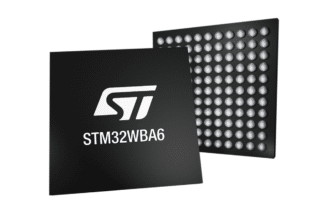Smart cities will rely on greener sources of energy. While the cost of renewable electricity is decreasing, availability remains problematic. But blockchain technology may help us build smart grids and move production closer to consumers. Take a tour of three Blockchain-based green energy platforms.
In November 2017, financial research firm Lazard showed that renewable energy is now cheaper than ever before, at times costing less than hydrocarbon fuels. In the last four years, the price of utility-scale photovoltaic electricity has fallen 36 percent. At $46 to $53 per megawatt-hour, it costs less than coal ($60). But pricing is only part of the challenge to the advancement of greener energy. Wind and solar power availability depends on the weather and time of day, and is often captured far from where it’s needed.
The Microgrid
In late 2016, global engineering giant Siemens and small US start-up LO3 Energy formed an alliance to develop energy trading based on blockchain technology. Since April 2016, LO3 has helped residents in the New York borough of Brooklyn link rooftop photovoltaic panels into a microgrid. This enables residents to buy and sell electricity, with blockchain technology providing a shared, tamper-proof record of transactions. Even neighbors without PV panels can buy from the microgrid.
Scott Kessler, the firm’s director of business development, says blockchain’s ability to record transactions will enable small producers and consumers to buy and sell electricity as demand and production fluctuate. Many production and control devices such as PV panels can be incorporated into a grid.
We are trying to come up with a platform to create a marketplace for grid devices. We view blockchain as an efficient communication protocol for the marketplace.
Kessler explains that conventional grid management involves a central control system drawing data from around the network, analyzing it and issuing commands to “peripheral” equipment. Because blockchain’s accurate records are accessible to all parties, the grid can be managed in real time through a marketplace of devices.
Kessler sees the technology reshaping electric networks, offering incentives for producing electricity closer to where it’s consumed.
At the moment, small-scale producers get credit at wholesale prices, plus maybe some environmental subsidy. We see benefit in reducing the distribution of electricity over large distances using transmission systems. Local production can easily access the local market.
Local Energy Loops

LO3 Energy is not the only firm looking to blockchain to boost the transition towards green electricity. Greenflex, owned by energy giant Total, is working with French consultancy Blockchain Partner on the concept of local energy loops.
Lucas Elicegui, Greenflex chief innovation officer, explains:
In the future, energy management will be more local. To make this a reality, we have to have the proper tools. Now, the few local producers must decide whether to consume it themselves or to sell it.
He explains that if office blocks and apartment buildings are fitted with PV panels, they may consume energy at different times. It makes sense to sell surplus electricity locally rather than injecting it into a national grid.
For the local producer and consumer, it’s win-win. You can get more locally than from the large distributor, while the consumer could be buying it for less.
Elicegui adds that blockchain’s records will show that a certain amount of electricity was produced at a certain time, and that a local consumer agreed to buy it at a certain price. All this will be likely managed by computer programs.
Greenflex and Blockchain Partner hope to have a prototype platform up and running by the end of this year.
Both the Greenflex and LO3 Energy models promise to alter the economics of green energy, potentially encouraging investment. At the same time, another firm hopes to use blockchain to facilitate access to financing for renewable energy producers.
The Token System

Lithuanian start-up WePower is set to offer developers the ability to sell green energy directly to buyers in advance of building large-scale green electricity plants. The blockchain-based token system opens financing to developers and offers buyers a discount price. Commercial energy consumers can buy tokens in advance of developers building facilities, guaranteeing future access to green energy and a lower price.
CEO Artūras Asakavičius says that as subsidies for renewable energy are withdrawn, banks require a higher ratio of up-front capital. The WePower system offers developers access to that capital, while helping large business consumers meet commitments to buying green energy.
WePower has already secured a client for a 1000 MW solar project and plans to launch the platform next year.












